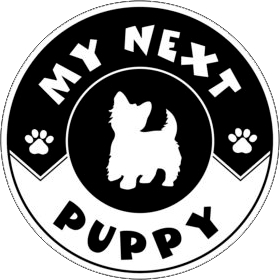-
Chihuahua
Graceful, alert, and swift-moving with a saucy expression, the Chihuahua is highly intelligent and should not be underestimated even though small in size. The breed can be any color: solid, marked, or splashed, and the coat may be long or short. These sassy little dogs are well known as “purse dogs” like the famous Bruiser in the movie Legally Blonde starring Reese Witherspoon.
History
The Chihuahua's history is shrouded in mystery, but some believe he originated from the Fennec Fox, a very small animal with big eyes and ears, which could explain the tiny frame, luminous eyes, and large ears on the breed today. Chihuahua's were used in religious ceremonies and were pets to the upper class. The breed derives its name from the Mexican State of Chihuahua, where the earliest specimens of the breed were found.
Temperament
The Chihuahua is an alert dog with terrier-like qualities. They are good with families if the children are gentle and patient. Because of their small size, they require little exercise and are good city dogs, but can be sensitive to cold temperatures. Smooth-coated Chihuahuas need very little grooming due to their short hair. Long coats need occasional brushing but still require minimal grooming.
- Toy Group; AKC recognized in 1904.
- Not more than 6 pounds.
- Companion dog.
Environment
- Apartment is fine because of small size
- Does not tolerate cold climates because of short hair
Exercise
- Daily short walk is fine
- Love to play
Grooming
- Average shedding because of short hair coat
- Regular brushing
- Regular bathing
-
Cocker Spaniel
Exhibited in the US since the 1880s, the Cocker Spaniel remains one of the most popular breeds according to AKC registration statistics. The Cocker has a sturdy, compact body and a silky, flat or wavy coat. He is a merry, well-balanced dog that is capable of considerable speed and great endurance. Cocker Spaniels can be black, black with tan points, parti-colored or any solid color other than black (ASCOB).
History
As far back as the 14th Century, there is mention of the Spanyell, which came to be divided into water and land spaniels. “Cockers” are the smallest of the spaniels and the Sporting Group. The American Cocker has evolved somewhat differently in appearance from the breed now recognized as the English Cocker Spaniel. His desire to hunt renders him a capable gun dog; he covers territory speedily, flushing game and retrieving only when under command. He takes to water readily.
Temperament
Despite their small size, the Cocker Spaniel is still an active Sporting breed that needs daily exercise. Regular brushing and a trim every few months help keep the coat free of mats. Cockers are intelligent, gentle dogs that thrive as part of a family.
- Sporting Group; AKC recognized in 1878.
- Average size: from 13 inches to 15 inches at the shoulder.
- Family pet, hunting dog.
Environment
- Apartment is ok
- Somewhat active indoors.
- Small yard is fine.
Exercise
- Daily walks
- Love extended play
Grooming
- Regular trimming needed
- Professional grooming recommended
- Daily brushing
-
Cairn Terrier
Best known as “Toto” from the Wizard of Oz, the Cairn Terrier is a small, hardy working terrier. Originally bred to aid Scottish farmers in ridding their properties of pests, Cairns today use their tenacity to excel in obedience, agility, terrier, and tracking trials. Alert and active, this breed possesses a harsh, weather-resistant outer coat that can be any color except white. The hair around the head gives him a general foxy expression.
History
The Cairn originated in the Highlands of Scotland and the Isle of Skye, initially grouped in the “Skye Terrier” class alongside the Scottish and West Highland White Terriers. In the early 1900s, the three breeds began to be bred separately. The name “Cairn” refers to the rock dens that foxes and badgers lived in throughout the countryside. The dog would squirm down into these “cairns” and bark to hold the predator until the farmer killed it.
Temperament
Cairns love their families but may try to test their owner's limits, so obedience training is necessary. Although they learn quickly, the Cairn may always have the instinct to dig and chase small animals, so new owners should be prepared for these behaviors. Regular brushing and exercise are also necessary to keep the breed fit and happy.
- Terrier Group; AKC recognized in 1913.
- Ideal size about 10 inches tall at the shoulder and 14 pounds.
- Fox/rat/otter hunter.
Environment
- Apartment is ok
- High activity indoors
Exercise
- Daily walk or moderate exercise
- Love to play
Grooming
- Frequent brushing
- Regular bathing
- Regular trimming
- Light shedding
-
English Bulldog
Known for their loose-jointed, shuffling gait and massive, short-faced head, the English Bulldog is known to be equable, resolute and dignified. A medium-sized dog, they are not your typical lap dog, but would like to be! They are one of the most popular breeds according to AKC Registration Statistics due to their lovable and gentle dispositions and adorable wrinkles. The English Bulldog may be brindle, white, red, fawn, fallow or piebald.
History
Said to have originated in the British Isles, the name “bull” was applied because of the dog's connection with bull baiting. The original bulldog had to be ferocious and courageous, and almost insensitive to pain. When dog fighting became illegal in England, fanciers set to the task of preserving the breed by eliminating the fierce characteristics. Within a few generations, the Bulldog became one of the finest physical specimens with an agreeable temperament.
Temperament
English Bulldogs are recognized as excellent family pets because of their tendency to form strong bonds with children. They tend to be gentle and protective. The breed requires minimal grooming and exercise. Their short nose makes them prone to overheating in warm weather, so make sure to provide a shady place to rest. Generally, Bulldogs are known for getting along well with children, other dogs, and pets. They can become so attached to home and family, that they will not venture out of the yard without a human companion. Bulldogs do better with positive training. They love getting rewarded with treats!
- Non-Sporting Group; AKC recognized in 1886.
- Ranging in size from 40 to 50 pounds.
- Family companion.
Environment
- Apartment is fine, also small condo
- Low activity indoors, due to their snouts
- thrive in moderate climates
Exercise
- Light daily exercise
Grooming
- Easy care
- Keep face clean
- Average shedding
-
Samoyed
A hardy and eager worker, the Samoyed is known for black lips that curl slightly at the corners into the “Samoyed smile.” Bright and alert, he likes to stay busy and enjoys participating in agility, herding, weight pulling, sledding, pack hiking, conformation shows and more! His heavy, weather-resistant coat is suitable for very cold climates and should be pure white, white and biscuit, cream or biscuit.
History
An ancient working breed, the Samoyed is very close to the primitive dog no mixture of wolf or fox runs through the breed's gene pool. He was developed by the Samoyed people of Siberia. They used the dogs for herding reindeer, hunting and hauling sleds as well as guard work. The breed was cherished by these people they even allowed them to sleep in their tents because they depended on the dogs for their survival.
Temperament
Intelligent, gentle and loyal, Samoyeds enjoy being with their families. Due to their working heritage, they may chase things, run and bark, so it's best to channel that energy into some kind of job or activity. Otherwise, these independent thinkers may invent ways to keep themselves entertained. At the very least, daily exercise is necessary. The Samoyed coat can also mat and needs to be brushed weekly, more often during shedding season.
- Working Group; AKC recognized in 1906.
- Ranging in size from 19 to 23 inches tall at the shoulder.
- Reindeer herder; Sled dog; Multi-purpose dog.
Environment
- Apartment is ok.
- Very active indoors.
- Thrive in cooler climates.
Exercise
- Daily moderate exercise.
Grooming
- Extensive brushing.
- Heavy seasonal shedding.
-
Siberian Husky
Bred in Northeast Asia as a sled dog, the Siberian Husky is known for its amazing endurance and willingness to work. Its agreeable and outgoing temperament makes it a great all-around dog, suitable for anything from sledding to therapy work. Because it originated in cold climates, Siberians have a thicker coat than most other breeds of dog, made up of a dense cashmere-like undercoat and a longer, coarse topcoat. All colors from black to pure white are allowed, but a variety of markings on the head is common.
History
The Siberian Husky is widely believed to have originated from within the Chukchi Tribe, off the eastern Siberian peninsula. These dogs were used in 1908 for the All-Alaskan Sweepstakes, which consisted of a 408-mile long dogsled race, and served in the Army's Arctic Search and Rescue Unit during World War II.
Temperament
Siberians are relatively easy keepers, but their thick coats require weekly brushing. New owners should be prepared to provide an outlet for exercise daily, whether through walks or an enclosed space in which to run. Predatory instincts are strong, so Siberians should be supervised around small animals in and around the home. Siberians do well around children, but tend to stay aloof. They want to protect their pack because that's what they were bred to do.
- Working Group; AKC recognized in 1930.
- Ranging in size from 20 to 23 inches tall at the shoulder and 35 to 60 pounds.
- Sled dog.
Environment
- Apartment? Not so much.
- Very active indoors.
Exercise
- Daily moderate to extended exercise.
- Loves a large yard.
Grooming
- Regular brushing.
- Heavy seasonal shedding.
-
Shetland Sheepdog
The Shetland Sheepdog, or “Sheltie” as it is commonly called, is essentially a working Collie in miniature. A rough-coated, longhaired working dog, he is alert, intensely loyal and highly trainable and is known as a devoted, docile dog with a keen sense of intelligence and understanding. Agile and sturdy, the Sheltie is one of the most successful obedience breeds, but also excels in agility, herding and conformation. The coat can be black, blue merle or sable, marked with varying amounts of white and/or tan. The Sheltie is small and therefore easy to take on trips! And because of their small stature, they are accepted in many hotels.
History
Like the Collie, the Sheltie's history traces back to the Border Collie of Scotland, which, after being transported to the Shetland Islands and crossed with small, intelligent, longhaired breeds, was eventually reduced to miniature proportions. Over time, subsequent crosses were made with Collies. The breed worked as farm helpers and home protectors, watching over crofters' cottages, flocks and herds from invaders of all kinds. The Sheltie does great with children and other dogs. They are also easy to train!
Temperament
Shelties love their families, but may be reserved at first with strangers. As a herding dog, they can be inclined to bark at and herd people. Shelties thrive on the farm but adapt to many living situations if given proper exercise. The breed's dense double coat requires regular maintenance.
- Herding Group; AKC recognized in 1911.
- Ranging in size from 13 to 16 inches tall at the shoulder.
- Sheep herder, farm dog.
Environment
- Apartment is ok.
- Fairly active indoors.
Exercise
- Daily moderate exercise.
Grooming
- Regular brushing.
- Bathe only when necessary.
- Heavy seasonal shedding.
-
Jack Russel Terrier
The Russell Terrier is a strong, hardy, earth-working Terrier. He is full of life and moves with confidence that matches his keen expression. The breed's handy size, small flexible chest, nose, strong voice, and fearless nature make it an excellent specimen to work vermin below ground. Its weatherproof coat may be smooth, broken, or rough and is predominantly white with tan and/or black markings.
History
The Russell Terrier originated in England but developed in Australia. The small size of the breed made it ideal to be carried on horseback in terrier bags, a requisite for certain terrain. The breed derived from the Reverend Parson's fox working terrier strains, sharing many common characteristics of the Parson Russell Terrier. However, it must be noted the two breeds are distinctly different in body structure and height and have been maintained as separate breeds in the US and Europe.
Temperament
The Russell Terrier is confident, highly intelligent and faithful, and views life as a great adventure. The breed possesses a vast amount of energy, so it does best with an active family that spends a lot of time outdoors. It will remain devoted and loving to its 'people' for its lifetime. The Russell Terrier coat requires minimal upkeep beyond brushing and occasional bathing.
- Miscellaneous class.
- Ranging in size from 10 to 12 inches tall at the shoulder.
- Fox hunter.
Environment
- Apartment is ok.
- Very active indoors.
Exercise
- Daily moderate to extended exercise.
Grooming
- Easy care.
- Bathe only when necessary.
-
Miniature Poodle
Highly intelligent and one of the most trainable breeds. Pleasant, happy, and sensitive. Perky and lively. Demanding and delightful. Very amusing and clever. Likes to be with his people. Tends to be reserved with strangers; should be well socialized as a puppy. Any effort the owner puts into training and socialization will be well rewarded. Some bloodlines may be high-strung and timid. May snap if teased or surprised.
History
The Poodle is most likely descended from early German water retrievers, but may also be related to spaniels from the Iberian Peninsula. The name probably derives from the German word “Pudel” (one who plays in the water). Hunters originally clipped the dog's thick coat to help it swim, leaving hair on the leg joints to protect them from extreme cold and sharp reeds. The French capitalized on the breed's high intelligence, trainability, and innate showmanship, using the Poodle as a circus performer. The breed's great popularity in that country led to the common name, French Poodle. In France, however, the Poodle is called the “Caniche,” or duck dog. The Poodle has also been used to sniff out truffles lying underground in the woods. Poodles are depicted in 15th-century paintings and in bas-reliefs from the 16th century. Toy Poodles became royal favorites, particularly in the 18th century. The Toy and Miniature Poodle varieties were bred down from the original larger dogs, now known as Standard Poodles. The three sizes are considered as one breed, and are judged by the same standard. Today, the Poodle is primarily a companion and show dog, though he can learn almost anything.
-
Bernese Mountain Dog
One of four varieties of Swiss Mountain Dog, the Bernese Mountain Dog is the only variety that possesses a long, silky coat. A hardy dog that thrives in cold weather, the “Berner's” intelligence, strength and agility helped him perform the drafting and droving work in the mountainous region where he originated. Today, this versatile breed participates in conformation, obedience, carting, agility, tracking, herding and therapy work. Like the other Swiss breeds, they are tri-colored, with patches of black, rust and white.
History
The Bernese Mountain Dog (Berner Sennenhund) originated in Switzerland and is named for the Canton of Bern. Historically, Berners were used as general-purpose farm dogs. Their large, sturdy frames and calm, confident temperaments made them ideal for pulling carts to market, driving dairy cattle, watching the farm and acting as companions to farmers.
Temperament
Farm dogs by heritage, Berners need a moderate amount of exercise as well as consistent obedience training. As a double-coated breed, they also tend to shed, and so require regular brushing. Their gentle, easygoing manner and the need to be close to their people make them a good fit for families. Despite their large size, they do great with children!
- Working Group; AKC recognized in 1937.
- Ranging in size from 23 to 27 inches tall at the shoulder.
- Draft dog; drover; watchdog.
Environment
- Apartments? Not so much.
- Low activity indoors.
- Thrive in cold climates.
Exercise
- Short to moderate daily exercise.
Grooming
- Brush 2-3X/week.
- Seasonal shedding.

 Available Puppies
Available Puppies What People Are Saying
What People Are Saying